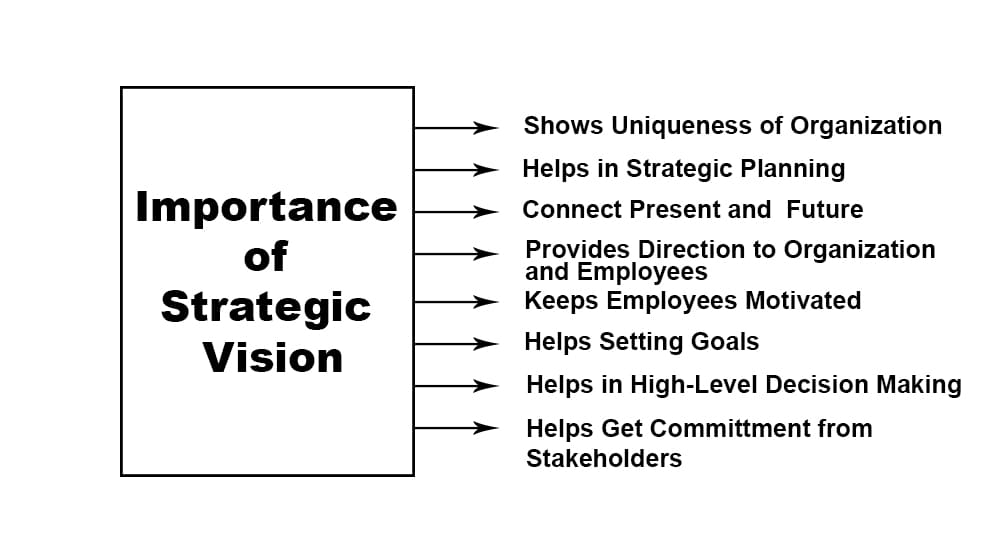Definition: A strategic vision describes the achievable future state of an organization. The timeline for reaching the vision can vary from three to ten years or more.
A strategic vision supports the organization’s mission statement and helps the organization and employees visualize the direction of the organization.
As the vision is time-bound, the organization will review and create a new vision statement once it is achieved.
Strategic vision helps organizations in strategic planning; it helps organizations plan their goals and assign resources to achieve success.
Examples of Strategic Vision Statements
- Amazon: To be the world’s most customer-centric company.
- Walmart: To become the worldwide leader of all retailing.
- Pfizer: To be the world’s most valued company to patients, customers, colleagues, investors, business partners, and the communities where we work and live.
- Johnson & Johnson: For every person to use their unique experiences and backgrounds, together – to spark solutions that create a better, healthier world.
- Netflix: Helping content creators around the world to find a global audience.
- Sony: To be the most comprehensive entertainment company in the world.
- Starbucks: To establish Starbucks as the most recognized and respected brand in the world.
- Coca-Cola: To craft the brands and choice of drinks that people love, to refresh them in body & spirit. And done in ways that create a more sustainable business and better-shared future that makes a difference in people’s lives, communities, and our planet.
- Ford: Democratize the automobile – to become the world’s leading Consumer Company for automotive products and services.
- Toyota: Toyota will lead the way to the future of mobility, enriching lives around the world with the safest and most responsible ways of moving people.
- Subaru: To create advanced technology on an ongoing basis and provide consumers with distinctive products.
- Tesla: Accelerate the advent of sustainable transport by bringing mass-market electric cars to market as soon as possible.
Developing a Strategic Vision
- Establish Goals: The organization must have tangible goals before proceeding to develop the strategic vision. The goal should be specific and measurable. The organization and employees should know what they are going to achieve.
- Alignment with Strategic Mission: Strategic mission is a high-level statement defining what an organization does and how it will achieve its objective. The strategic vision must align with the strategic mission. Any mismatch will create ambiguity in the organization.
- Must be Achievable: The strategic vision must be realistic, achievable, and time-bound. Before developing a strategic vision, an organization should consider its position, resources, and skills. An unrealistic schedule will demoralize employees and affect the organizational culture.
- Review and Update: A strategic vision requires reviews and updates when it is achieved. Organizations must review the strategic vision from time to time. Current market conditions or new business direction can also change the strategic vision.
Importance of Strategic Vision

An organization’s vision is important for the following reasons:
- It shows the uniqueness of an organization
- It helps in strategic planning
- It connects present and future
- It provides direction to the organization and staff
- It keeps employees motivated
- It helps set goals
- It helps in high-level decision making
- It helps get commitment from stakeholders
Conclusion
A strategic vision shows organizational aspiration and provides a view of where the organization is going. It supports strategic missions and strategic objectives. This is a time-bound statement and must be reviewed once the organization reaches its vision.
